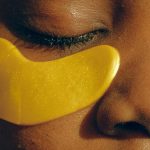“How different climates affect your skin while travelling” is a collaborative post.
When you travel to new places, the climate can take a toll on your skin as humidity, temperature, UV exposure, and other environmental factors differ from your norm. Understanding how these different environments affect your skin is key to maintaining a healthy, happy complexion on your adventures.
Dry, cold climates
Mountains and winter wonderlands offer breathtaking beauty, but the cold can wreak havoc on your skin. There’s the dry air which sucks moisture from the skin and cold temperatures that worsen matters by reducing oil production.
This lack of moisture can leave your skin rough and itchy, and the wind exacerbates this effect. What’s more, cold, dry air is a recipe for chapped, uncomfortable lips.
To protect you from the cold while cruising through glaciers in Alaska or similar locales, wear layers of clothing and an insulating hat. Add a humidifier to your hotel room and use heavier creams or ointments, not lotions. Lastly, look for products with ceramides to repair the skin barrier and avoid harsh cleansers and exfoliants that can strip your skin.
Hot, humid climates
The opposite problem occurs in hot, humid destinations. Hot, dry air pulls moisture from your skin, leaving it feeling parched and tight, while stronger UV rays accelerate aging and increase the risk of sunburn. The combination of sweat and oil can also clog pores, leading to breakouts for some.
To help control your skin’s oil levels, use oil-free, water-based products labelled “non-comedogenic.” Cleanse twice daily and use a toner with alpha hydroxy acids. You should also exfoliate regularly and use mattifying products to help control shine. Still, don’t overly strip your skin, and avoid dry air conditioning as it can dehydrate skin too.
High altitude
High altitude means lower humidity and intense UV exposure. Just like dry winter air, skin becomes parched quickly. The sun also damages the skin faster. For this type of climate, you’ll want to use a broad-spectrum sunscreen year-round and reapply often.
Moisturise more frequently and ditch drying ingredients like retinoids temporarily. You should also consider taking antioxidant supplements like vitamins C and E. This can help protect your skin from oxidative stress caused by the sun and dry air.
UV exposure
UV radiation is the skin’s worst enemy, causing sunburns, wrinkles, age spots, and cancer risk. It exists year-round and penetrates the clouds so there’s really no way to escape it. The best you can do is use sunscreen daily. Choose SPF 30 or higher with zinc oxide or titanium dioxide, and make sure to reapply every 2 hours.
Make sure to avoid sunscreen ingredients like oxybenzone, Vitamin A, and fragrances, as they can cause irritation or hormone disruption. Seeking shade during peak hours, and wearing protective clothing, hats, and sunglasses can further shield your skin from UV damage.
Tips for any climate
Whatever the weather, certain skincare rules apply year-round:
- Stay hydrated by drinking water.
- Get enough sleep and eat nutritious foods.
- Always remove makeup before bed.
- Reduce stress, which worsens conditions like acne and eczema.
- Check product ingredients for your skin type and sensitivities.
- Adjust cleansing, moisturising, and anti-aging routines as needed.
- Bring travel sizes or transfer favorites into small containers.
Conquering cold climates
With preparation, your skin can thrive anywhere. If you’re cruising, make sure to pack a variety of skincare products for changing climates. You might encounter hot, humid ports and chilly evenings on deck.
Pack a lip balm with SPF to protect you from the cold and a gentle cleanser and a lightweight moisturiser with antioxidants. By understanding how climate affects your skin and packing the right essentials, you can ensure your travel adventures are filled with glowing memories, not skincare woes.





